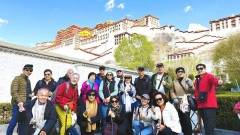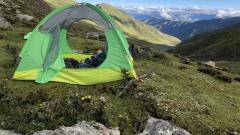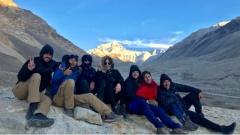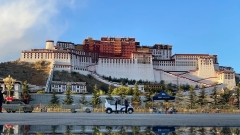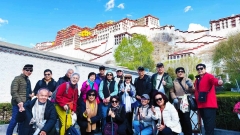Many travelers dream of visiting Tibet — the “Roof of the World,” home to sacred monasteries, snow-capped mountains, and a unique spiritual atmosphere. But for seniors over 70, the question often arises: Is it safe to visit Tibet? The answer is — yes, it can be, with the right preparation and awareness. This comprehensive guide explains what elderly travelers need to know about traveling to Tibet, including health precautions, altitude concerns, travel tips, and how to make the journey comfortable and safe.
1. Can People Over 70 Visit Tibet?
Yes, seniors over 70 can travel to Tibet, but only if their health condition allows. There is no legal age restriction for entering Tibet, but a medical fitness certificate is usually required for travelers above 70. Most travel agencies and local authorities will ask for a doctor’s note confirming that the traveler is in good physical condition and fit to visit high-altitude areas.
Travelers who have heart disease, severe hypertension, respiratory problems, or recent surgery are generally advised not to go, as Tibet’s average altitude (3,500–5,000 meters) may pose risks related to oxygen deficiency.
2. Understanding the Altitude Challenge
The biggest challenge for senior travelers is altitude sickness (acute mountain sickness). Tibet’s thin air contains about 30% less oxygen than at sea level, which can cause headaches, dizziness, shortness of breath, or fatigue.
Altitude levels by region:
| Destination | Average Elevation | Altitude Risk |
|---|---|---|
| Lhasa | 3,650 m | Moderate |
| Namtso Lake | 4,718 m | High |
| Shigatse | 3,800 m | Moderate |
| Everest Base Camp | 5,200 m | Very High |
Tips for Seniors to Adjust Safely:
-
Stay in lower-altitude areas first: Spend 2–3 days in Lhasa before visiting higher regions like Shigatse or Namtso Lake.
-
Avoid rushing: Plan an itinerary with rest days and avoid climbing or long walks in the first few days.
-
Use oxygen if necessary: Most hotels and tour vehicles in Tibet provide oxygen cylinders for temporary relief.
-
Keep warm and hydrated: Cold temperatures can worsen symptoms — dress in layers and drink plenty of water.
3. Pre-Trip Preparation: What to Do Before Visiting Tibet
Medical Check-Up
Before planning your trip, consult your doctor about your heart, lungs, and blood pressure. If approved, request a health certificate confirming you are fit for high-altitude travel — this is often required when applying for the Tibet Travel Permit for travelers over 70.
Gradual Ascent Plan
To minimize altitude shock, consider ascending gradually by taking the Qinghai–Tibet train instead of flying directly into Lhasa. The train climbs slowly, helping your body acclimate to decreasing oxygen levels.
Medications
Bring enough regular medications for your entire trip, along with a small first-aid kit. Some doctors may recommend acetazolamide (Diamox) to help prevent altitude sickness — consult your physician before taking it.
Insurance
Purchase comprehensive travel insurance that covers emergency evacuation and high-altitude medical care. Hospitals in Tibet are limited, especially outside Lhasa, so insurance is crucial.
4. Best Places in Tibet for Senior Travelers
Not every region in Tibet is suitable for older travelers. Here are recommended destinations with comfortable altitudes, accessible routes, and good facilities:
Lhasa (3,650m)
The capital city offers the best medical facilities and moderate altitude. Seniors can enjoy sightseeing at:
-
Potala Palace – symbolic landmark (elevators available partway up)
-
Jokhang Temple – spiritual heart of Tibet
-
Barkhor Street – easy circular walking route for shopping and people-watching
Nyingchi (2,900m)
Known as the “Switzerland of Tibet,” Nyingchi has the lowest altitude and mildest climate in Tibet — ideal for seniors. Visit Lulang Forest, Basum Tso Lake, and Niyang River Valley for relaxing scenic experiences.
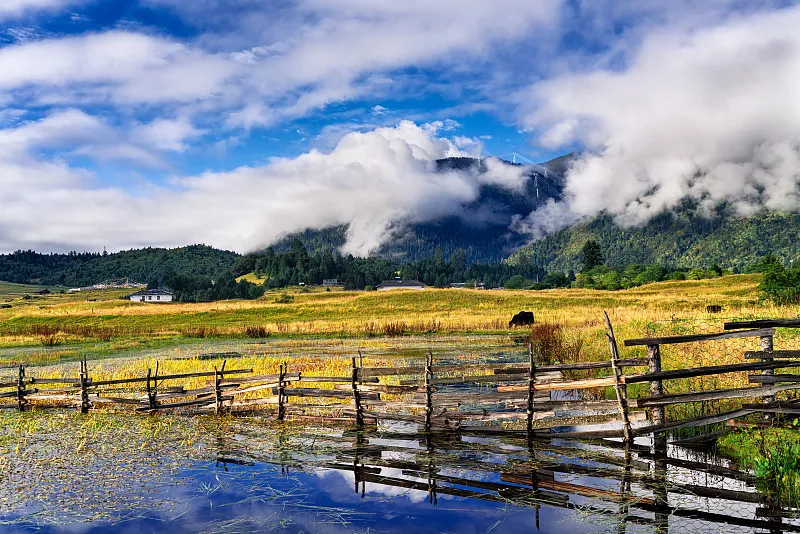
Morning in Lulang, Nyingchi
Shigatse (3,800m)
A cultural and historical hub, home to Tashilhunpo Monastery. Visit after acclimatizing in Lhasa for a deeper look into Tibetan Buddhism.
Avoid: High-altitude areas such as Everest Base Camp and Ngari (Mount Kailash region), unless your health condition is excellent and you are well acclimatized.
5. Choosing the Right Tour and Accommodation
Small Group or Private Tour
For seniors, a private or small group tour ensures personal attention and flexibility. Tour guides can adjust the schedule, rest stops, and altitude progression according to your needs.
Comfortable Hotels
Opt for 4-star hotels or higher in major cities — they usually provide oxygen supplies, heating, and elevators. Avoid basic guesthouses in remote regions where comfort and oxygen support are limited.
Transportation
Travel in well-maintained tourist vehicles equipped with oxygen and blankets. Long driving days should include regular rest stops.
6. Food, Hydration, and Rest
-
Eat light meals: Avoid greasy or overly spicy food at high altitude; stick to soups, vegetables, and easily digestible local dishes.
-
Stay hydrated: Dry air at high altitude causes dehydration. Drink warm water frequently.
-
Avoid alcohol and smoking, which can worsen oxygen deprivation.
-
Sleep well: Fatigue increases altitude sickness risk. Don’t plan too many activities in one day.
7. Emergency Tips and Medical Care
If symptoms like severe headache, vomiting, or breathlessness occur, descend immediately or seek medical help. Lhasa has hospitals equipped for altitude-related care, including the Tibet Autonomous Region People’s Hospital.
In serious cases, evacuation to Chengdu (the nearest major medical city) may be necessary — hence, travel insurance is essential.
8. When Is the Best Time for Seniors to Visit Tibet?
The ideal seasons are April to June and September to October, when weather is mild and oxygen levels are relatively stable.
Avoid:
-
July–August: Heavy rains can make travel tiring.
-
Winter (December–February): Cold temperatures and icy roads may pose risks for older travelers.
9. Final Advice: Enjoy Tibet Slowly
For seniors, Tibet should not be rushed. The journey is about soaking in the serenity, culture, and spirituality — not racing to every landmark. With the right planning and pacing, travelers over 70 can safely enjoy the stunning landscapes and peaceful monasteries of this sacred land.
Conclusion
Traveling to Tibet after 70 is possible and deeply rewarding. With medical clearance, careful planning, and a responsible travel agency, seniors can experience the region’s magic safely. Remember: the key to enjoying Tibet at any age is slow travel, good preparation, and respect for your body’s limits.
For customized and comfortable Tibet tours suitable for senior travelers, visit China Dragon Travel — specialists in safe, personalized Tibet journeys.



